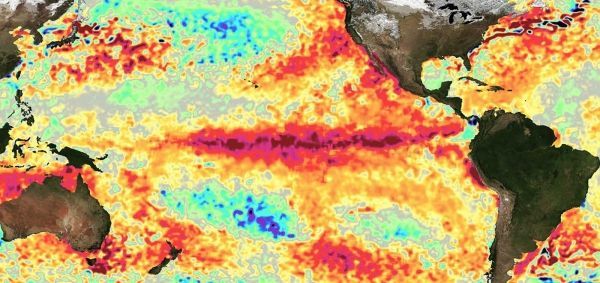Although a number of operational climate models are capable of predicting El Niño events, they cannot perform long-term forecasts more than half a year in advance. Now, a team from the Barcelona Institute for Global Health (ISGlobal), an institution supported by ”la Caixa”, has developed a new statistical climate model able for the first time to predict El Niño episodes up to two-and-a-half years in advance .
The El Niño Southern Oscilation (ENSO) is a climate phenomenon that represents a variation of atmospheric and oceanic features over the equatorial Pacific. It occurs every 2-7 years, but has an irregular periodicity. It consists of two opposite phases: a warming of the sea-surface temperature in the eastern and central equatorial Pacific Ocean known as El Niño, and an opposite cooling phase known as La Niña. ENSO can cause extreme weather events in many regions of the world through atmospheric teleconnections, and therefore, it has very important implications for the global seasonal climate predictions.
The study, published in The Journal of Climate, uses a series of predictor variables including sea temperatures at different depths, as well as winds in the tropical Pacific, in a flexible statistical dynamic components model to make retrospective predictions of ENSO events between 1970 and 2016 . The model is capable of predicting all the major El Niño episodes that occurred within that period, including the extreme event of 2015-2016, up to two-and-a-half years in advance.
Continue reading at Barcelona Institute for Global Health (ISGlobal)
Image via Barcelona Institute for Global Health (ISGlobal)


